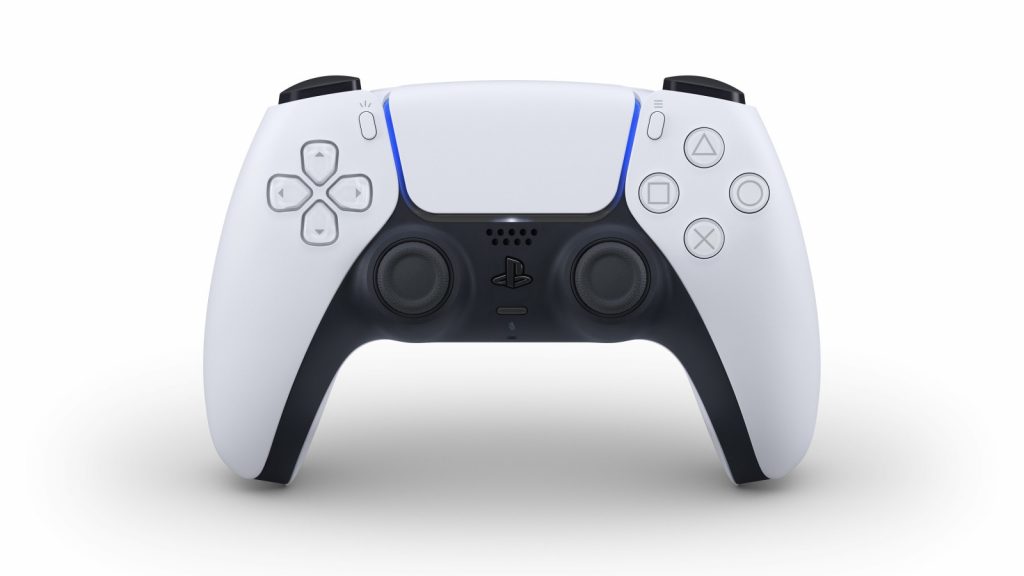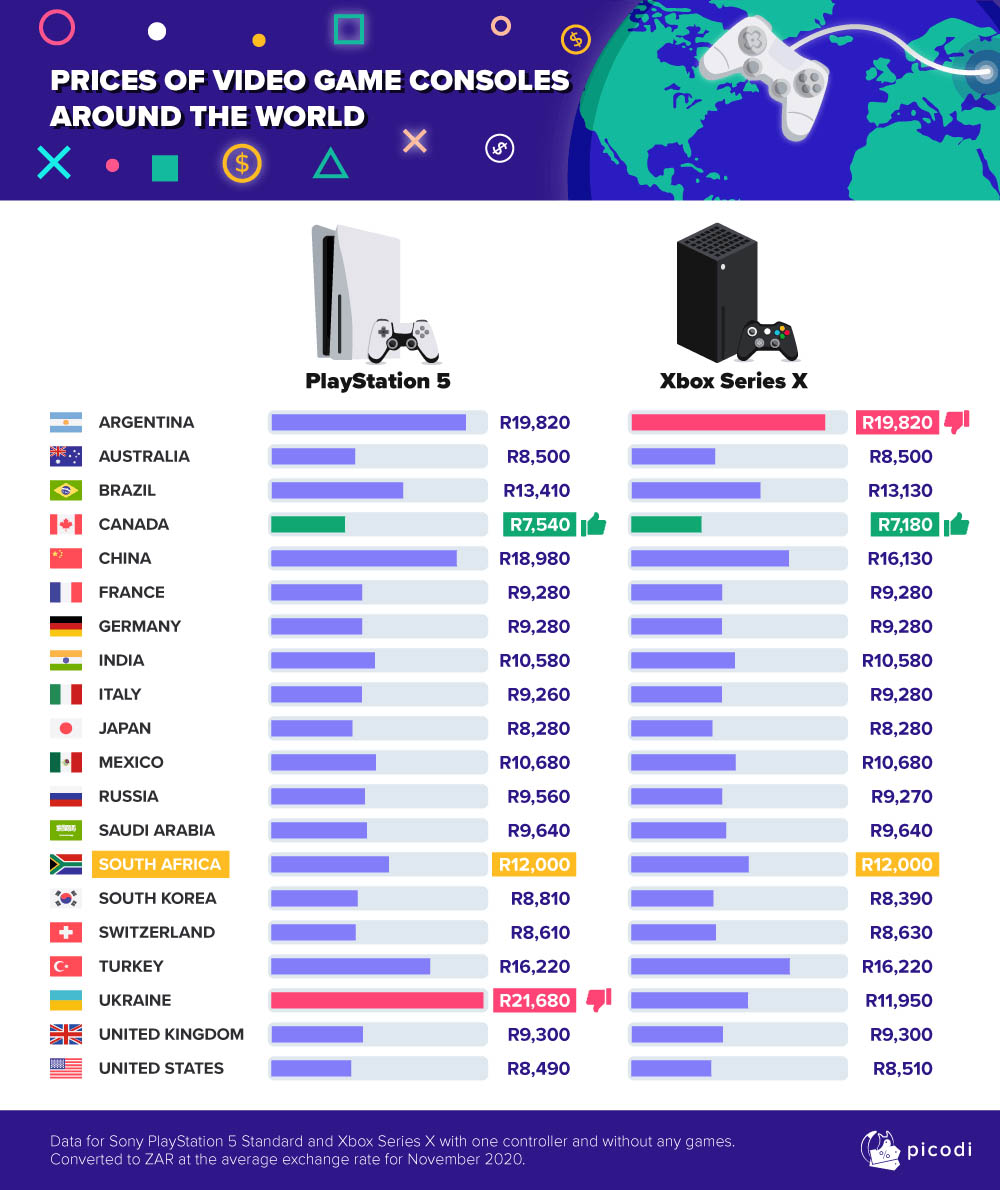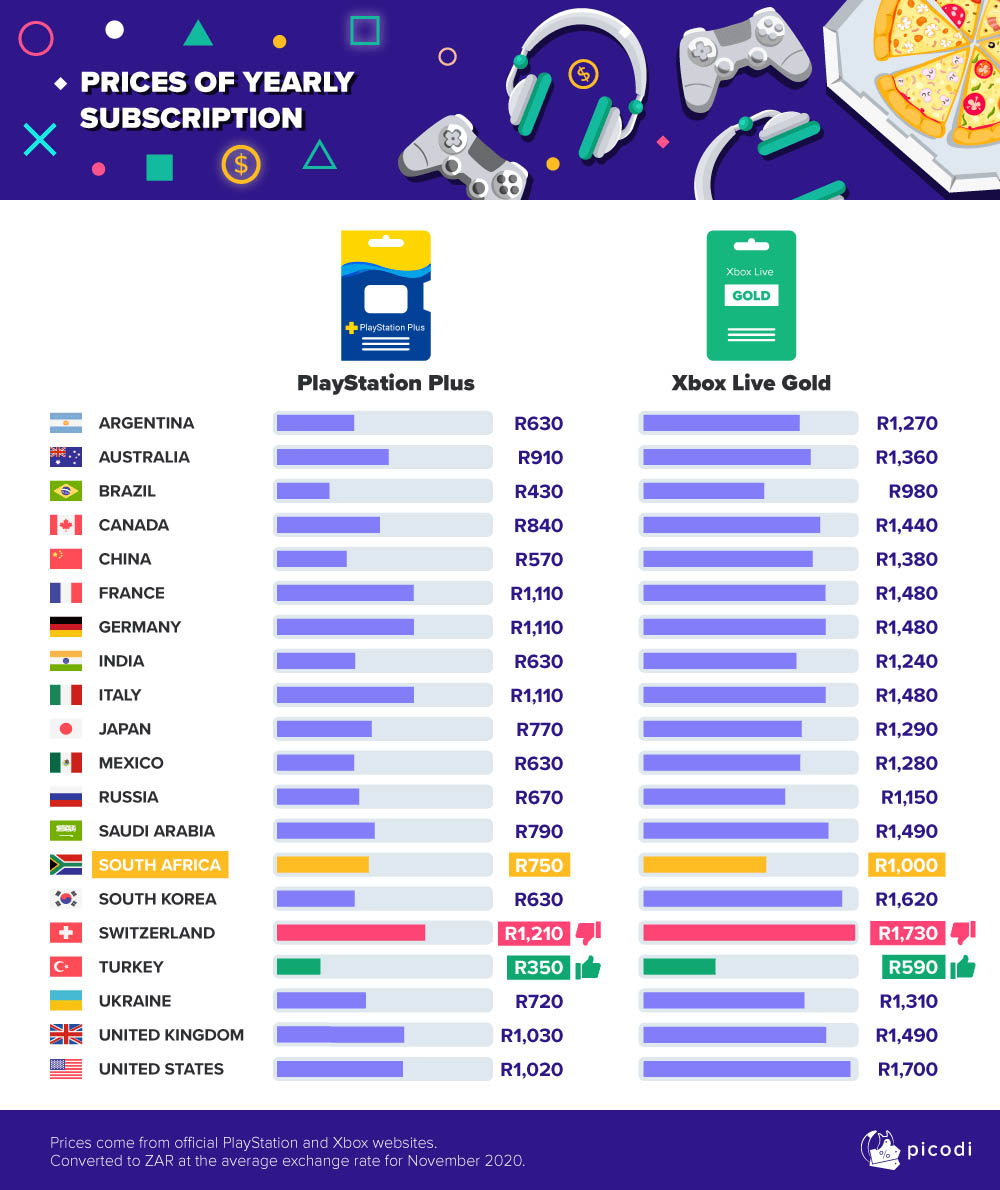Samsung heads into CES 2026 with momentum Samsung Electronics is closing out 2025 with a strong signal of where its future tech ambitions lie….
The price of console gaming in South Africa compared

There is one undeniable truth that we simply cannot escape — being a console gamer in South Africa is damn expensive.
Thanks to insights provided by Picodi, an international eCommerce company that conducts regular market analysis, this truth is backed up by hard facts and deep data.
South Africa vs. the world — console pricing compared
Currently, in South Africa, both the PS5 and the Xbox Series X will set you back around R12 000. (Ed’s note — Click to see larger images in new tab)
How does that compare to the rest of the world? Well, we’re paying more than most developed countries, including the UK, USA, Australia, and Switzerland.
Right now, Canada is by far the cheapest country to be a gamer in with both the Xbox Series X and PS5 costing a mere R7 540 and R7 180, respectively.
But while South Africans are surely are paying a hefty fee to jump into their digital adventures, there are other countries that unfortunately have it much worse.
Currently, Ukraine takes the top spot for most expensive country with its locals paying a staggering R21 650 for a PS5, closely followed by Argentina with R19 820, and China with R18 980. It’s also interesting to note that Ukraine is the only country where the PS5 is more expensive than the Xbox Series X.
Strangely enough, it seems countries that sport exorbitant PS5 prices still pay a lot less for the Xbox Series X. As one example, where Ukraine pays R21 650 for the PS5, the Xbox Series X sets Ukrainians back a much lower R11 950.
But there’s one exception – Argentina. Poor, poor Argentina, undeniably the worst place in the world to be a console gamer right now. The South American country pays R19 820 for both the PS5 and the Xbox Series X. “Ouch” is an understatement!
South Africa vs. the world – subscriptions fees
When it comes to the yearly gaming subscription fees for both consoles, namely PlayStation Plus and Xbox Gold Live, the international cost trend seems to change a bit.
Here, South Africa thankfully doesn’t fare too bad. PS Plus sets us back R750 per year and Xbox Gold Live R1 000 per year.
This puts South Africa just below the average of both console subscription services, the averages being R796 for the PS5 and R1338 for the Xbox Series X.
Switzerland has it the worst, with PS Plus costing the Swiss R1 210 and Xbox Gold Live R1730. But when you take into account the noticeably low prices of their consoles, R8 160 for the PS5 and R8 630 for the Series X, it doesn’t seem so bad.
Turkey comes out on top (or bottom rather) when it comes to the lowest subscription fee, with the Turkish paying a mere R350 and R590 for PS Plus and Xbox Gold Live, respectively. This seems quite fair considering they pay a fairly lavish R16 220 for both consoles.
While we’re on that note, this lower subscription fee trend seems to extend to most countries where consoles are more expensive. It does look like Sony and Microsoft are trying to level the playing field, if only slightly.
For example, where Ukraine takes the top spot for the most expensive PS5 at R21 680, their PS Plus subscription fee is R720, putting them below the international average.
The methodology behind Pocodi insights
To provide some clarity on their market analysis, Pocodi explained its methodology for reaching the above conclusions.
All the above data is based on the countries local prices. It references the standard console with one gamepad and including no games. Subscription prices are based on the rates as seen on the official websites of PlayStation and Xbox.
Currency conversion was based on the average exchange rate as of November 2020.
Additionally, Picodi also noted that “Microsoft stopped selling 12-month Xbox Live Gold subscriptions which is why in this comparison, we multiplied costs of 3-month subscriptions by 4.”
If you’re interested in exploring Pocodi’s insights into the console market a bit more, check out their analysis here.
Feature image: Sony




